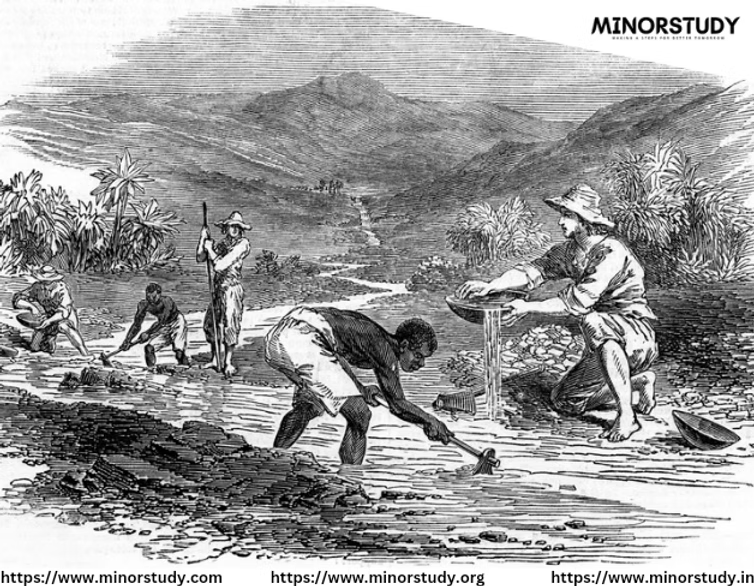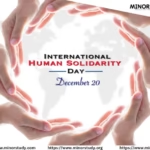Discover the powerful truth behind the International Day for the Abolition of Slavery—history, facts, timeline, significance, global observance, and its lasting impact on modern life.
International Day for the Abolition of Slavery is observed annually on December 2nd to raise awareness about modern slavery and strengthen global efforts to eradicate it. This day was established by the United Nations General Assembly to commemorate the adoption of the United Nations Convention for the Suppression of the Traffic in Persons and the Exploitation of the Prostitution of Others in 1949.
- 🗓️ What is the International Day for the Abolition of Slavery?
- 📜 Historical Background: Why December 2?
- 🧠 7 Eye-Opening Facts About Modern-Day Slavery
- 🔍 What Is Modern Slavery?
- 🌐 Global Observance and Actions
- ❓ Frequently Asked Questions (FAQs)
- ❓ Is slavery still legal anywhere in the world?
- ❓ What is the difference between slavery and human trafficking?
- ❓ How can I tell if a product was made using slave labor?
- ❓ How can children be protected?
- ❓ What are some famous campaigns against slavery?
- 💥 Why This Day Is More Relevant Than Ever
- 💬 Human-Centered Reflections: Why It Should Matter to You
- 🎯 5 Powerful Ways to Observe This Day
- 🎉 Wishing Messages and Quotes
- 🌟 Conclusion: What Can We Do in Daily Life?
- 📢 Social Media Caption
The observance focuses on combating contemporary forms of slavery, such as human trafficking, forced labor, child labor, forced marriages, and sexual exploitation, which continue to affect millions worldwide.
🗓️ What is the International Day for the Abolition of Slavery?
Every year on December 2, the world comes together to observe the International Day for the Abolition of Slavery, a day dedicated to raising awareness about modern slavery, human trafficking, child labor, forced marriage, and all other forms of exploitation and servitude that still haunt humanity today.
This is not just a memorial to the past but a rallying call to fight injustice in the present.
📜 Historical Background: Why December 2?
The United Nations General Assembly proclaimed December 2 as the International Day for the Abolition of Slavery in 1986, marking the anniversary of the adoption of the UN Convention for the Suppression of the Traffic in Persons and of the Exploitation of the Prostitution of Others (2 December 1949).
This treaty was a global commitment to fight the institutional remnants of slavery and its newer forms in the 20th and 21st centuries.
But the roots go deeper…
🌍 Timeline of the Global Fight Against Slavery
| 📅 Year | 🔹 Milestone |
|---|---|
| 1807 | UK and USA begin legislative abolition of the transatlantic slave trade. |
| 1833 | The British Empire formally abolishes slavery. |
| 1865 | Slavery abolished in the United States via the 13th Amendment. |
| 1926 | The League of Nations signs the Slavery Convention. |
| 1948 | Universal Declaration of Human Rights declares: “No one shall be held in slavery or servitude.” |
| 1949 | UN adopts the Convention on the Suppression of Human Trafficking and Exploitation. |
| 1981 | Mauritania becomes the last country to abolish slavery legally. |
| 1986 | UN proclaims International Day for the Abolition of Slavery. |
🧠 7 Eye-Opening Facts About Modern-Day Slavery
🌐 Over 50 million people were living in modern slavery in 2021 (ILO report).
👶 1 in 4 victims of modern slavery is a child.
🚸 Forced marriage affects over 22 million people, often girls under 18.
💼 Many forms of forced labor occur in legitimate industries: agriculture, manufacturing, domestic work.
🌍 Slavery is not confined to any one country – it’s a global crisis.
📱 Even common goods like electronics, fashion, and food may involve slave labor in their supply chains.
🧾 Modern slavery generates over $150 billion annually in illegal profits.
🔍 What Is Modern Slavery?
Modern slavery is an umbrella term that includes:
Human trafficking
Forced labor
Debt bondage
Sex trafficking
Forced or early marriage
Child exploitation
Servitude and domestic slavery
Unlike traditional slavery, these practices often hide behind legality, poverty, or social customs. Victims are coerced, manipulated, or economically trapped, with no real freedom to escape.
🌐 Global Observance and Actions
🌍 United Nations
The UN works with ILO, UNODC, UNICEF, and other agencies to combat slavery by:
Promoting policies
Supporting victims
Monitoring abuses
Educating the public
📣 Civil Society
NGOs like Anti-Slavery International, Walk Free, and Free the Slaves lead awareness drives and rescues.
🏢 Corporate Responsibility
Global companies are being pressured to audit supply chains and avoid sourcing from regions with forced labor (e.g., Uyghur labor in China).
👥 You & Me
Everyone can contribute by:
Supporting ethical brands
Donating to rescue missions
Reporting suspected human trafficking
Educating others
❓ Frequently Asked Questions (FAQs)
❓ Is slavery still legal anywhere in the world?
No, slavery is illegal in every country, but enforcement is weak, and cultural loopholes persist, especially in parts of Africa, Asia, and the Middle East.
❓ What is the difference between slavery and human trafficking?
Human trafficking is a method; slavery is the result. Trafficking leads people into situations of slavery.
❓ How can I tell if a product was made using slave labor?
Check for certifications like Fair Trade, Ethical Trading Initiative, and research brand supply chains on sites like KnowTheChain.org.
❓ How can children be protected?
Enforce school attendance, raise awareness, strengthen laws, and ensure that child labor is neither employed nor normalized in society.
❓ What are some famous campaigns against slavery?
Walk Free Foundation’s Global Slavery Index
End It Movement
International Justice Mission (IJM)
Slavery Footprint Quiz
💥 Why This Day Is More Relevant Than Ever
Even in the 21st century, digital slavery, online grooming, cyber trafficking, and forced content creation (e.g., webcam slavery) are new-age horrors.
This day is a wake-up call to not just recognize historic injustices but act upon the present-day chains—visible or invisible.
💬 Human-Centered Reflections: Why It Should Matter to You
Imagine not having the freedom to:
Say no
Quit a job
Marry whom you choose
Leave an abusive environment
Get an education
This is the daily reality of millions. They don’t live in the past. They’re our contemporaries.
Empathy is not enough — informed action is necessary.
🎯 5 Powerful Ways to Observe This Day
Light a candle in memory of past and present victims.
Attend a webinar or awareness event.
Share statistics or survivor stories on social media.
Support a rescue organization with time or donation.
Pledge to buy ethically — vote with your wallet.
🎉 Wishing Messages and Quotes
🕯️ “On this day, may we commit to unshackling all those still trapped in modern bondage.”
✨ “Slavery might be illegal, but it still exists. Awareness is the first weapon.”
💔 “Real freedom comes when no human lives in fear or force. Let’s be their voice.”
🌈 “May the light of compassion free the world from the darkness of slavery.”
🌟 Conclusion: What Can We Do in Daily Life?
In everyday life, you can make a difference:
Be curious: Ask questions about the origins of products.
Be cautious: Watch for signs of exploitation in your community.
Be courageous: Raise your voice, even if it’s uncomfortable.
Be committed: Consistently support efforts that fight injustice.
The International Day for the Abolition of Slavery is not just about history. It’s a call to action—to live consciously, act compassionately, and help create a world where no human is another’s property.
🌐 “Until all are free, none of us are truly free.”
📢 Social Media Caption
🚫 On #AbolitionOfSlaveryDay, let’s raise our voices for the 50+ million still in bondage. Modern slavery is real—and we can stop it. #EndModernSlavery #HumanRights #BeTheChange








